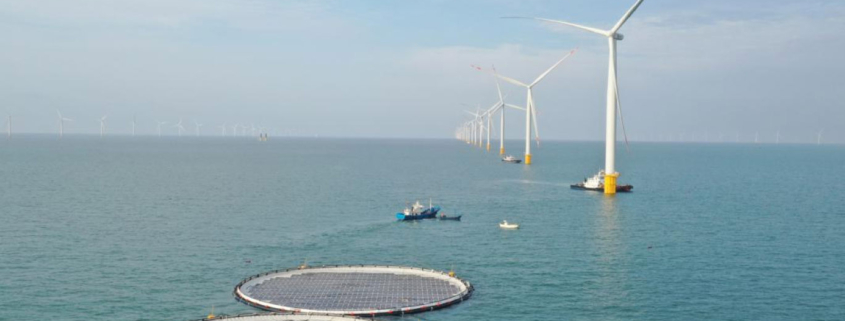Solar Farms Out at Sea: Pioneering Clean Energy Advancements
Picture solar farms like this: rows of solar panels generating electricity on circular rafts, braving waves as high as 10 meters in China’s Yellow Sea, about 30 kilometers off the coast of Shandong province. This experiment by State Power Investment Corp. and Ocean Sun AS is a groundbreaking test of offshore solar technology, offering new possibilities for clean energy.
Offshore solar farms have the potential to change the renewable energy sector by allowing renewable installations in sea locations. It offers a way for land-constrained regions to accelerate their transition away from fossil fuels.
The versatility of offshore solar knows no bounds. Regions such as parts of Europe, Africa, and Asia, including places like Singapore and Hong Kong, are constrained by land, so this technology is of great interest. Shandong, an industrial hub, has ambitious plans to add over 11 gigawatts of solar offshore by 2025, and Jiangsu aims to add 12.7 gigawatts. Japan, the Netherlands, Malaysia, and other nations are also exploring similar ventures.
How can we benefit from solar farms?
The potential benefits are immense, with locations like Huainan in China’s Anhui province showcasing installations of about half a million floating solar panels on artificial lakes. Research suggests that adding solar systems on existing reservoirs could enable more than 6,000 global cities and communities to develop self-sufficient power systems.
While the idea holds great potential, there are still some unknowns. We need more studies to understand the lasting effects of placing solar panels on water bodies. In China, they have limited certain freshwater locations due to worries about how it might impact the environment.
Developers are actively experimenting with different concepts, such as Ocean Sun’s innovative ring-shaped floaters and SolarDuck AS’s triangular platforms. Although offshore solar may come with higher installation costs compared to onshore solar, it offers a unique opportunity for land-starved coastal cities like Singapore to embrace renewable energy.
In China alone, the forecast suggests a potential of about 700 gigawatts of offshore solar—equivalent to India and Japan’s combined electricity generation capacity. As this promising sector gains momentum, we have only begun to scratch the surface of its vast potential.
The future of renewable energy could very well lie offshore, where the sun’s rays meet the sea’s expanse.









